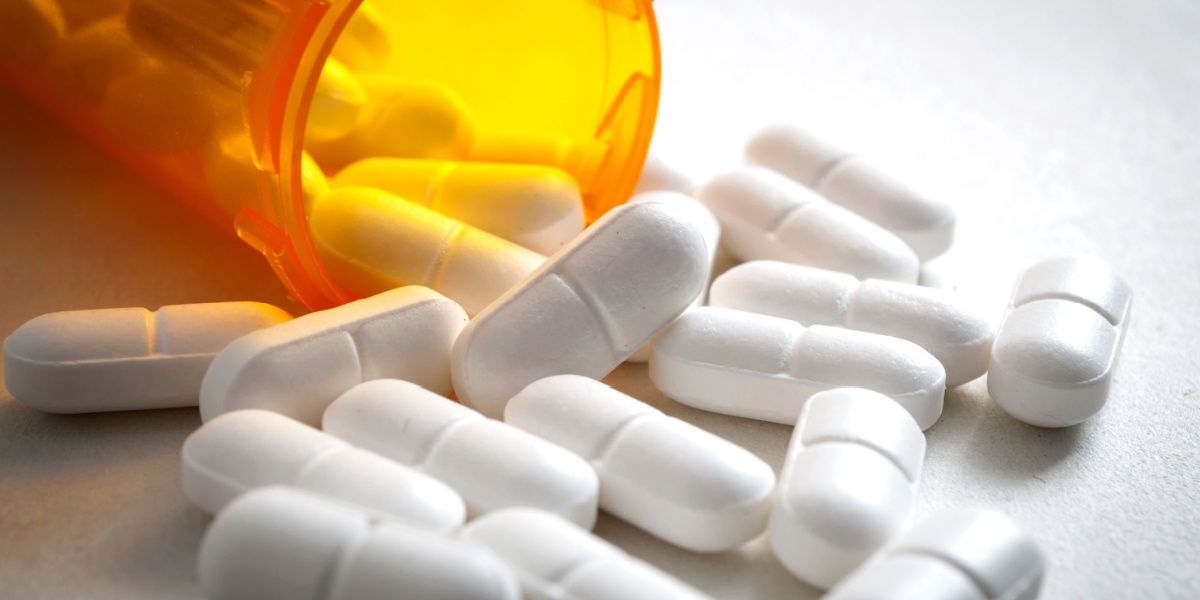Vicodin is a brand-name medication containing hydrocodone and acetaminophen that is commonly prescribed to manage severe pain. Vicodin can cause several mild to moderate side effects including nausea, drowsiness, dizziness, sedation, constipation, and lightheadedness. It can also cause severe, potentially life-threatening side effects, particularly when abused, which may also lead to dependence and addiction.

Common side effects of Vicodin
When starting a new treatment or increasing the dosage, it is common to experience side effects. Usually, these side effects will only last a week or two before alleviating. However, if they continue or become concerning, it is recommended to consult a doctor, as a change in treatment may be required. Common side effects of Vicodin include: [1][2][5]
- Lightheadedness
- Nausea
- Vomiting
- Sedation
- Dizziness
- Drowsiness
- Impaired cognition
- Weakness
- Anxiety
- Low mood
- Change in mood or behavior
- Constipation
- Stomach pain
- Urinary retention
- Change in heart rate or breathing rate
- Itchy skin
- Euphoria
- Dry mouth
- Headache
- Insomnia
- Shaking
- Loss of appetite
Severe side effects of Vicodin
In some cases, Vicodin can cause severe or persistent side effects that may require professional treatment. Severe side effects of Vicodin can include: [1][2][5]
- Chest pain
- Trouble breathing or swallowing
- Swelling of the face or mouth
- Rash or hives
- Irregular menstruation
- Sexual dysfunction
- Extreme change in heart rate
- Persistent vomiting or diarrhea
- Extreme dizziness or drowsiness
- Hallucinations
- Fever
- Severe muscle stiffness or twitching
- Overdose
- Tolerance
- Dependence
- Addiction
The risk of severe side effects, overdose, tolerance, dependence, and addiction are all increased with prolonged and heavy Vicodin use. With extended use, dependence and tolerance are likely to develop, which can lead to an increase in the amount and frequency of use and can contribute to the development of an addiction.[4]
When dependence has developed, withdrawal symptoms are likely to occur when Vicodin use is reduced or stopped, which can include flu-like symptoms, pain, insomnia, diarrhea, and anxiety. [1]
Addiction, dependence, and tolerance can occur independently of one another, as they are all distinct conditions, although it is common for them all to develop with continued use or abuse. [4]
Why do people abuse Vicodin?
Vicodin contains hydrocodone, an opioid medication that causes euphoria and sedation in addition to its analgesic effects, which contribute to its abuse potential. Some people who abuse Vicodin have been prescribed the medication, while others may have obtained it illicitly. Vicodin abuse can involve administering the medication in unintended manners, such as snorting or injecting. [3]
Vicodin and other prescription opioids can be easily accessible as they are widely prescribed. In many cases, prescribed Vicodin treatments can lead to tolerance and dependence, which in turn can lead to abuse and/or addiction [4]
Tolerance causes the effects of the medication to be reduced and can lead to increased use to achieve the desired effects, which increases the risk of abuse. When dependence has developed, the body cannot function normally without continued use of Vicodin and it is common for withdrawal symptoms to emerge when use is reduced or stopped. [1]
Vicodin blocks pain receptors and causes the release of dopamine, which reinforces use and contributes to its abuse potential. [4]
People who abuse Vicodin might try to obtain a prescription or additional prescriptions illicitly by visiting numerous doctors, known as ‘doctor shopping’, or by forging prescriptions. [3]
Vicodin overdose
People taking Vicodin, whether as prescribed or illicitly, may still be at risk of overdose. This risk is increased if Vicodin is used in combination with another central nervous system depressant, including other opioids, benzodiazepines, or alcohol, and can lead to respiratory depression, loss of consciousness, and death. [5]
Signs of a Vicodin overdose include: [1][5]
- Difficulty breathing
- Slowed or stopped breathing
- Cold, clammy skin
- Severe decrease in heart rate
- Pinpoint pupils
- Pale or blue skin
- Loss of consciousness
If a Vicodin overdose is suspected, call 911 immediately, as life-saving treatment may be required. Naloxone, an opioid antagonist available as an injection or as a nasal spray (Narcan), can be administered to block or reduce the effects of Vicodin. [4]
Getting treatment for Vicodin dependence
Individuals who are prescribed Vicodin should be involved in regular treatment reviews with their prescribing doctor. The doctor can decide when Vicodin is no longer needed and plan for a gradual cessation, slowly tapering the individual off their medication to prevent or reduce opioid withdrawal symptoms. [1]
People with a strong Vicodin dependence may require more extensive treatment to reduce or stop their use. This might involve outpatient or inpatient services involving detoxification or rehabilitation treatment. [6]
Medication is often utilized to treat opioid use disorders (OUD) such as Vicodin dependence, as withdrawal symptoms can be severe. Certain medications can reduce cravings and withdrawal symptoms, help maintain abstinence, prevent relapse, and improve quality of life. This can include: [6][7]
- Opioid agonists: Methadone and buprenorphine are often used to treat OUDs such as Vicodin dependence, as they can reduce cravings and withdrawal symptoms during detox and can help prevent relapse when used as a long-term maintenance treatment.
- Opioid antagonists: Naltrexone and naloxone can help prevent relapse when used as a long-term maintenance treatment. It blocks the effects of opioids but can cause the onset of withdrawal symptoms if used before 7-10 days of Vicodin abstinence.
- Symptom management: Medications such as clonidine, loperamide, benzodiazepines, and non-opioid pain relief can be used short-term to help reduce withdrawal symptoms such as nausea, diarrhea, shaking, increased heart rate, insomnia, agitation, and pain.
Also, individuals requiring treatment for Vicodin dependence can benefit from additional interventions, including: [6][7]
- Psychotherapy: such as cognitive behavioral therapy (CBT)
- Psychosocial interventions: such as housing and financial support
- Holistic therapies: such as nutritional counseling, creative therapies, and exercise
- Physical healthcare: to manage ongoing pain
- Support groups: such as Narcotics Anonymous


.svg?v=1722504342)


